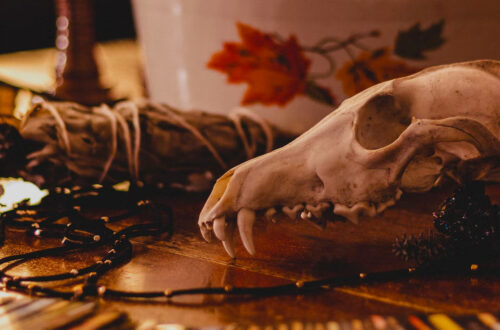
List of wiccan spells
Wicca, a modern pagan religion rooted in ancient traditions, places a profound emphasis on the practice of magic. Wiccan magic, often spelled as “magick” to differentiate it from stage magic, is a transformative and sacred art that draws upon the energies of nature, the cycles of the moon, and the interconnectedness of all things. Join us as we embark on a journey through the diverse and enchanting realms of Wiccan magic, exploring rituals, tools, and practices that weave the magickal tapestry of this vibrant spiritual path.
- The Wiccan Rede
At the heart of Wiccan magic is the Wiccan Rede, a moral guideline that emphasizes harmlessness, personal responsibility, and ethical conduct. The well-known phrase “An it harm none, do what ye will” encapsulates the essence of Wiccan ethics, encouraging practitioners to be mindful of the consequences of their actions and to use magick for positive purposes.
- The Elements and quarters
Wiccans work with the four classical elements—earth, air, fire, and water—as well as the corresponding quarters: north, east, south, and west. In rituals, practitioners invoke these elemental energies to create a sacred circle and connect with the forces of nature. Each element is associated with specific qualities, such as earth with stability and water with intuition, providing a foundation for spellwork and ritual symbolism.
- Casting the circle
Casting a circle is a fundamental practice in Wiccan magic, symbolizing the creation of sacred space and the establishment of a barrier between the mundane world and the magickal realm. Practitioners often use tools such as an athame (ritual knife) or wand to trace the perimeter of the circle, calling upon the elements and quarters to guard and bless the sacred space within.
- Altars
The altar serves as a central point for Wiccan rituals and spellwork, a physical representation of the magickal intentions and connections with the divine. Altars are adorned with symbolic items, such as candles, crystals, herbs, and deity representations, each carefully chosen to amplify the energies of the working. Altar setups vary among practitioners, reflecting personal preferences and the specific focus of the magickal workings.
- Sabbats and esbats
Wiccans celebrate the cycles of nature through the Wheel of the Year, which consists of eight Sabbats and thirteen Esbats. Sabbats mark the changing seasons and include festivals such as Samhain, Beltane, and Lammas. Esbats, on the other hand, are lunar celebrations that coincide with the phases of the moon. Wiccans use these occasions to perform magick aligned with the energies of the season or lunar cycle.
- Ritual tools
Wiccan rituals often involve the use of specific tools, each with its unique purpose and symbolism. The athame, a ritual knife, is associated with the element of fire and is used for casting circles and directing energy. The chalice represents water and is used to hold ritual beverages. The wand corresponds to air and is employed for invoking and directing energy. The pentacle, a disc or plate with a five-pointed star, symbolizes earth and serves as a focal point for consecration.
- Book of shadows
The Book of Shadows is a sacred and personal grimoire used by Wiccans to record spells, rituals, correspondences, and personal reflections. It serves as a magickal journal and a repository of wisdom passed down through generations or acquired through personal experience. Wiccans often dedicate time to consecrating and charging their Book of Shadows, infusing it with their magickal intentions.
- Moon phases
Wiccan magic is deeply attuned to the phases of the moon, with each phase carrying unique energies that influence spellwork. The waxing moon is ideal for spells focused on growth, manifestation, and attraction, while the waning moon is suitable for banishing, releasing, and removing obstacles. Full moons are potent times for rituals, as they symbolize culmination and the peak of magickal energy.
- Spellwork
Wiccan spellwork involves the use of rituals, chants, and focused intention to bring about desired outcomes. Spells can range from simple candle magick to elaborate rituals involving multiple tools and correspondences. Wiccans may cast spells for healing, protection, love, prosperity, or personal empowerment. The key to effective spellwork lies in clear intention, focus, and alignment with ethical principles.
- Divination
Wiccans often turn to divination tools, such as tarot cards, runes, or scrying tools, to gain insights into the spiritual realms and receive guidance from the divine. Divination is viewed as a means of connecting with higher wisdom and unlocking hidden knowledge. Wiccans may perform divination during specific phases of the moon, on Sabbats, or as part of Esbat rituals.
Conclusion
Wiccan magic is a dynamic and evolving practice that embraces the natural rhythms of the earth, the wisdom of the elements, and the interconnectedness of all life. As practitioners weave the magickal tapestry of their spiritual journey, they draw upon ancient traditions, personal intuition, and a deep reverence for the sacred. Whether casting a circle, invoking elemental energies, or crafting spells with intention, Wiccan magic invites individuals to explore the mysteries of the universe and cultivate a harmonious relationship with the magick that resides within and around them.




